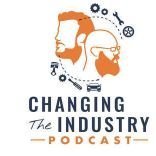Back When - - - Which era do you fit into?
-
Available Subscriptions
-
Have you checked out Joe's Latest Blog?
-
By Joe Marconi in Joe's Blog0 commentsIt always amazes me when I hear about a technician who quits one repair shop to go work at another shop for less money. I know you have heard of this too, and you’ve probably asked yourself, “Can this be true? And Why?” The answer rests within the culture of the company. More specifically, the boss, manager, or a toxic work environment literally pushed the technician out the door.
While money and benefits tend to attract people to a company, it won’t keep them there. When a technician begins to look over the fence for greener grass, that is usually a sign that something is wrong within the workplace. It also means that his or her heart is probably already gone. If the issue is not resolved, no amount of money will keep that technician for the long term. The heart is always the first to leave. The last thing that leaves is the technician’s toolbox.
Shop owners: Focus more on employee retention than acquisition. This is not to say that you should not be constantly recruiting. You should. What it does means is that once you hire someone, your job isn’t over, that’s when it begins. Get to know your technicians. Build strong relationships. Have frequent one-on-ones. Engage in meaningful conversation. Find what truly motivates your technicians. You may be surprised that while money is a motivator, it’s usually not the prime motivator.
One last thing; the cost of technician turnover can be financially devastating. It also affects shop morale. Do all you can to create a workplace where technicians feel they are respected, recognized, and know that their work contributes to the overall success of the company. This will lead to improved morale and team spirit. Remember, when you see a technician’s toolbox rolling out of the bay on its way to another shop, the heart was most likely gone long before that.
-
-
Similar Topics
-
By Joe Marconi
Premium Member Content
This content is hidden to guests, one of the benefits of a paid membership. Please login or register to view this content.
-
By carmcapriotto
The Weekly Blitz is brought to you by our friends over at Shop Marketing Pros. If you want to take your shop to the next level, you need great marketing. Shop Marketing Pros does top-tier marketing for top-tier shops.
Click here to learn more about Top Tier Marketing by Shop Marketing Pros and schedule a demo:https://shopmarketingpros.com/chris/
Check out their podcast here: https://autorepairmarketing.captivate.fm/
If you would like to join their private Facebook group go here: https://www.facebook.com/groups/autorepairmarketingmastermind
In this episode, Coach Chris Cotton from Auto Fix Auto Shop Coaching delivers an inspiring message aimed at empowering auto repair shop owners to break through self-imposed barriers and unlock their full potential as effective business leaders. Throughout the discussion, he emphasizes the critical importance of cultivating a positive mindset, maintaining accountability, and taking bold, decisive actions to achieve one's dreams within the auto repair industry. Chris underscores the notion that the most significant obstacles shop owners face are often internal rather than external, suggesting that self-doubt and fear can hinder progress more than any market condition or competition.
To combat these internal challenges, Chris advocates for the transformative power of coaching, which can provide fresh perspectives and a structured framework for accountability. He believes that having a coach can help shop owners see their businesses from a new angle, identify areas for improvement, and stay committed to their goals. This external support can be crucial in helping them navigate the complexities of running a successful auto repair shop.
The episode is sponsored by Shop Marketing Pros, highlighting the essential role that tailored marketing strategies play in supporting the growth and success of auto repair shops. By leveraging targeted marketing efforts, shop owners can effectively reach their desired audience, enhance their brand visibility, and ultimately drive more business. The sponsorship underscores the synergy between effective coaching and strategic marketing, both of which are vital components in the journey toward achieving sustained success in the auto repair industry.
Introduction to the Episode (00:00:20)
Coach Chris Cotton introduces the episode and its focus on empowering auto repair shop owners.
Sponsorship Acknowledgment (00:01:21)
Chris thanks Shop Marketing Pros for their support and highlights their unique marketing strategies.
Unlocking Your Potential (00:02:24)
Discussion on the importance of getting out of your own way to unlock personal and business potential.
Identifying Internal Barriers (00:03:30)
Chris emphasizes that the biggest obstacles are often self-imposed rather than external challenges.
Dream Big and Act Boldly (00:04:33)
Encourages listeners to let their dreams lead instead of being hindered by fear and doubt.
The Role of Coaching (00:05:50)
Explains how coaching provides perspectives and accountability to help overcome self-imposed barriers.
Mindset Reset (00:06:52)
Coaches help identify and reframe self-limiting beliefs to approach problems with confidence.
Defining Success (00:07:59)
Coaches assist in clarifying what success looks like beyond just financial metrics.
Actionable Strategies (00:08:59)
Discusses the importance of breaking down big goals into manageable steps for clarity.
Accountability in Coaching (00:09:59)
Stresses the need for accountability to prevent falling back into old habits.
Visualizing Your Dream Shop (00:10:13)
Encourages listeners to vividly imagine their dream shop and life to create a plan.
Taking Bold Action (00:10:13)
Calls for committing to one bold step today to move closer to the envisioned goals.
Finding Support (00:10:13)
Highlights the importance of surrounding oneself with supportive peers, coaches, or mentors.
Conclusion and Motivation (00:11:13)
Chris motivates listeners to recognize their potential and take action towards their dreams.
Connect with Chris:
[email protected]
Phone: 940.400.1008
www.autoshopcoaching.com
Facebook: https://www.facebook.com/
AutoFixAutoShopCoachingYoutube: https://bit.ly/3ClX0ae
#autofixautoshopcoaching #autofixbeautofixing #autoshopprofits #autoshopprofit #autoshopprofitsfirst #autoshopleadership #autoshopmanagement #autorepairshopcoaching #autorepairshopconsulting #autorepairshoptraining #autorepairshop #autorepair #serviceadvisor #serviceadvisorefficiency #autorepairshopmarketing #theweeklyblitz #autofix #shopmarketingpros #autofixautoshopcoachingbook
Click to go to the Podcast on Remarkable Results Radio
-
By Changing The Industry
Lessons Learned from Opening a New Shop #podcast #autorepairbusiness #automotivebusiness

-
-
-
Our Sponsors

















Recommended Posts